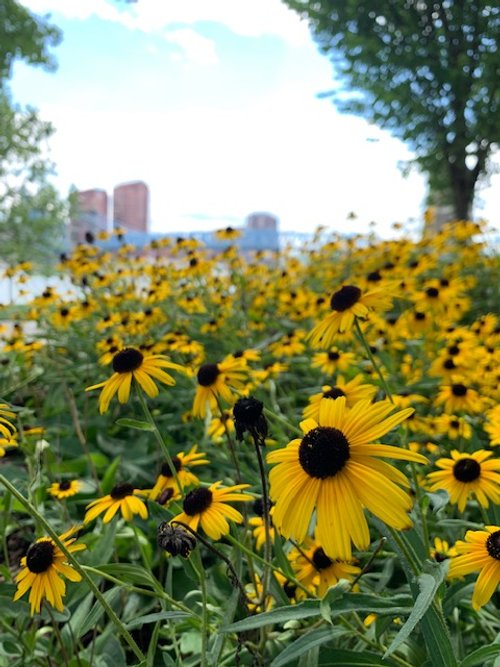
Planting for Pollinators
What Can You Plant for Pollinators?
Native plants and native pollinators evolved together and rely on each other still today. Planting perennial native plants is one of the best ways to plant for pollinators!
Each pollinator has different flying styles, vision and tongue sizes, so planting a variety of colors, heights and types of blooms will make sure that everybody gets to eat.
Too many nurseries and distributors grow plants using pesticides like neonicotinoids. Check the growing process before you buy. It’s best to avoid big box stores. Though many are phasing neonics out, some still use them.
Don’t have your yard sprayed for mosquitoes. Despite the companies’ claims, the sprays kill indiscriminately. That means that they not only take out mosquitoes, but also bees and butterflies.
See below for our plant recommendations!
Planting for Bees
Bumble bees, leaf cutter bees, carpenter bees, honeybees and more! The Greater Cincinnati area is home to about 500 bee species! And, all of them rely on different types of flowers for nesting material, pollen, nectar and even shelter. Here’s a small sample of flowers you can plant specifically for bees!
Aster - New England Aster is great and also Aromatic Aster
Larkspur
Bee Balm
Snapdragon
Bee Balm (Monarda)
Rosemary
Borage
Echinacea
Milkweed
Lambs Ear (wool carder bees scrape the fuzz off and use it in their nests!)
Zinnia
Photo by: Carrie Driehaus
Planting for Butterflies
Monarchs, Painted Ladies, Eastern Black Swallowtails, Clouded Sulphers, Red Spotted Purples and more! The Greater Cincinnati area is home to about 130 butterfly species! Butterflies require a host plant and nectar plants to survive. Host plants are flowers or trees or shrubs that have leaves which the caterpillars can eat. The butterfly lays her eggs on the host plant so the caterpillar will have food as soon as it hatches. Additionally, they need nectar flowers to provide them with energy to fly! Here’s a list of some of the host plants!
Monarch- Milkweed
Black Swallowtail- Parsley, dill, fennel, carrot leaves, Golden Alexander
Zebra Swallowtail- Paw Paw Tree
Spicebush Swallowtail- Spicebush and Sassafras
Easter Tiger Swallowtail- Sassafras Tree
Pearl Crescent- Aster
Red Admiral- Stinging Nettle and False Nettle
Question Mark-Hackberry Tree
Great Spangled Fritillary- Violets
Silver Spotted Skipper- Partridge Pea
Spring and Summer Azure- Black Cherry Tree
Common Buckeye- Hoary Vervain
Cloudless Sulfur- Wild Senna
Pipevine Swallowtail- Wooly Dutchman’s Pipevine
Photos by: Carrie Driehaus



